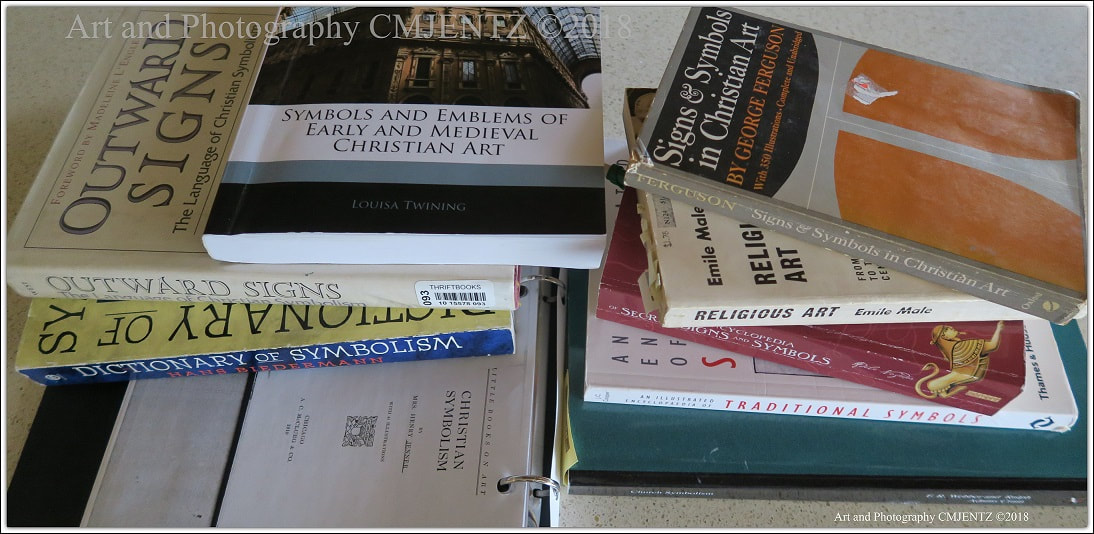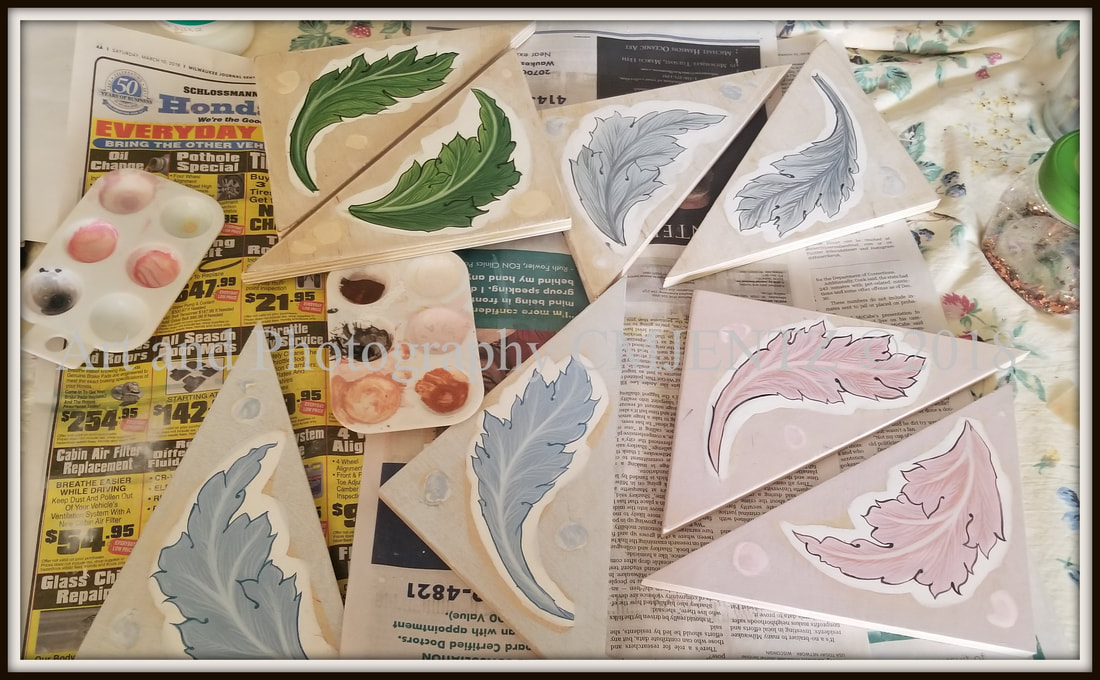The Symbolic Tabernacle
This “tabernacle” can be made in different ways. The most specialized and traditional method is to hollow out the center of the wood panel by hand and with a chisel. I am not sure how many are still doing it this way as electric, oil or other energy powered types of hand tools and machines are most accurate, convenient and found in even the most remote places. They certainly make the job easier, saving wear and tear on the body, and I would guess the ancients might have opted for them if available.
Here you see that on one of the boards the slats were applied in the initial stage of gessoing and for the other, slats were included at a later stage in the process, an afterthought, and will be secured well with glue, gesso overcoats, and fine sanding. For thin borders, such as these, it is not necessary to apply so many layers of gesso. In either case, the end appearance will be the same.
This “tabernacle” can be made in different ways. The most specialized and traditional method is to hollow out the center of the wood panel by hand and with a chisel. I am not sure how many are still doing it this way as electric, oil or other energy powered types of hand tools and machines are most accurate, convenient and found in even the most remote places. They certainly make the job easier, saving wear and tear on the body, and I would guess the ancients might have opted for them if available.
Here you see that on one of the boards the slats were applied in the initial stage of gessoing and for the other, slats were included at a later stage in the process, an afterthought, and will be secured well with glue, gesso overcoats, and fine sanding. For thin borders, such as these, it is not necessary to apply so many layers of gesso. In either case, the end appearance will be the same.
Designing and Making Custom Boards for My Icons
On my website are several references to icon board making. However, I find that additional "show and tell" articles are always to helpful to those considering me for an art project.
Post on substrates. On traditional rabbit skin gesso boards
On my website are several references to icon board making. However, I find that additional "show and tell" articles are always to helpful to those considering me for an art project.
Post on substrates. On traditional rabbit skin gesso boards
A board hand-made and respected from beginning to end. Short demos:
Sales and Inquiries Contact
A New Peacock Painting. Symbol of Renewal, the Resurrection, and More.
A Historical Bestiary: The Peacock. This richly adorned, fantastically whimsical painting of one long time, favorite design of mine. It has been artfully updated on a custom made, 14", mitered, gesso board.
A Historical Bestiary: The Peacock. This richly adorned, fantastically whimsical painting of one long time, favorite design of mine. It has been artfully updated on a custom made, 14", mitered, gesso board.
"About fine art. Handmade, in a rich and ancient method, with durable materials, take time and skill to make. An icon or other artwork cannot be made overnight. Many paintings take at least a couple of weeks, and can take months, depending on size and complexity. Think of what it costs you to live for that long. Iconographers and painters too, have to live and pay their bills, like everyone else. When the iconographer makes a contract with you, they are committing themselves to put their life at your service for a certain amount of time. S/he will pray and paint, asking to be a channel of grace & beauty, for your life, for your church, for your parish or family".
Have a beautiful season and this summer (which begins on Thursday, June 21st), maybe visit your local zoo. Say "hi" to the peacocks! Their feathers really are splendid, God-given works of natural art and, to be sure, they have done nothing exceptional or meritorious to warrant such a gift.
An accumulated collection of books on symbolism. It is great to have more than one immediate, tactical source on hand. Each book below offers a different perspective depending on the author's focus. Two presentations on the bird are referenced at the bottom of this page. One specifically details the Early Christian historical cycle and the other, a "Dictionary of Symbolism", lists the peacock's symbolic significance since ancient times and in various cultures.
The Historical Symbolism of the Peacock
Sales and Inquiries Contact
The Peacock. This richly adorned, fantastically whimsical painting of one long time, favorite design of mine. It has been artfully updated on a custom made, 14", mitered, gesso board.
A preview of new work. An art connoisseur would easily recognize the art and crafts style acanthus pattern. The leaves were painted in egg tempera on a hand applied, gesso background. Four color combinations are shown here. Leaves in grays, reds, purples, yellows and even white are possible.
It might appear from the the photo that I am happily playing an adult game of Lincoln Logs today. What you actually see here is frame assembly; all cut and ready for placement. The all-wood pattern is reminiscent of an earlier era and of my own design. These four, custom pieces took three days to complete.
For sales inquire.
It might appear from the the photo that I am happily playing an adult game of Lincoln Logs today. What you actually see here is frame assembly; all cut and ready for placement. The all-wood pattern is reminiscent of an earlier era and of my own design. These four, custom pieces took three days to complete.
For sales inquire.
In Ancient Greek architecture acanthus ornament appears extensively in the capitals of the Corinthian and Composite orders, and applied to friezes, dentils and other decorated areas. The oldest known example of a Corinthian column is in the Temple of Apollo Epicurius at Bassae in Arcadia, c. 450–420 BC, but the order was used sparingly in Greece before the Roman period. The Romans elaborated the order with the ends of the leaves curled, and it was their favorite order for grand buildings, with their own invention of the Composite, which was first seen in the epoch of Augustus.Acanthus decoration continued in popularity in Byzantine, Romanesque, and Gothic architecture. It saw a major revival in the Renaissance, and still is used today. ~Wikipedia
In architecture, an ornament may be carved into stone or wood to resemble leaves from the Mediterranean species of the Acanthus genus of plants, which have deeply cut leaves with some similarity to those of the thistle and poppy. ... The motif is found in decoration in nearly every medium."


















